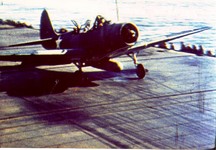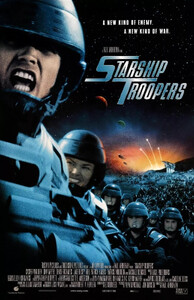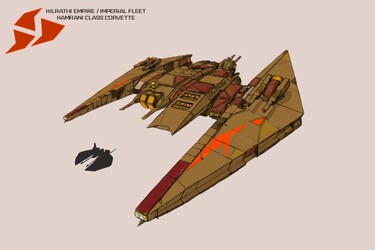WC vs. History: Aces Over Eights




For the second day of our Battle of Midway series, we are going to look at another connection from a Wing Commander novel. Action Stations tells the story of Commander Winston Turner, a Naval Academy professor turned intelligence operative in the first days of the Kilrathi War (Turner is something of a Mary Sue for author Dr. William Forstchen, who is himself a college history professor). Early on, we learn that Turner's family history goes back to the first shots of the Battle of Midway, the failed attack on the Japanese carriers by Torpedo Squadron Eight:
Skip's gaze shifted to the other print, of a naval battle, back when fleets still sailed on water.The first question--what does Turner's photo look like? The novel specifies first that it is of a sea battle, but later mentions that it is of Torpedo Eight:"You had an ancestor in that one, didn't you?"
"Squadron Leader, Torpedo Eight," Turner said proudly, even though he was speaking of someone dead nearly three quarters of a millennium.
"And they all got shot down, but not one of them wavered from the attack on the Japanese carriers. Their heroic sacrifice pulled the fighters down to sea level, allowing the dive-bombers to slip through. Damn, what guts they had then," Skip said, looking back at Turner who arched an eyebrow in surprise that his friend remembered the story from the Battle of Midway.
Again Skip smiled and looked over at the print of Torpedo Eight going in to the attack at Midway.For obvious reasons, there are no photographs of the attack itself. So this photograph of the squadron forming up near the USS Hornet (source) seems to be the only option:"I think you've got some good blood in your veins." Turner looked down into his empty glass and, reaching for the bottle, he refilled it. He gazed at the picture of his old comrades and then at the print of Torpedo Eight. So now the cards get called in, he realized. I've been pitching the line about duty, honor, sacrifice for so long and then this old SOB calls me on it. He almost wanted to laugh at the irony of it.
Who is Commander Turner's brave ancestor? Since he specifies that it was the squadron's commander we know that it was Lieutenant Commander John Waldron (though he died in the battle, he was survived by two daughters). For the true story of Lieutenant Commander Waldron and Torpedo Eight we again turn the update over to Dundradal:
Lieutenant Commander John Charles Waldron was born in Fort Pierre, South Dakota on August 21, 1900. He was descended from colonial New Hampshire families on his father's side, part Ogala Lakota Sioux on his mother's side and was the youngest of five children. Appointed to the US Naval Academy in 1920, he graduated with the Class of 1924, 479th out of a class of 525 men. He received his golden wings and brown shoes after spending the summer of 1927 at the Naval Air Station in Pensacola, Florida. Waldron spent the interwar period serving in just about every aviation position the US Navy had to offer at the time. In the late 1930s he worked with Carl Norden, maker of the Norden bombsight as the Navy's inspector of ordinance at the plant.
In the fall of 1941 in Norfolk, Virginia, Waldron was given command of a torpedo squadron that was to fly from the new carrier USS Hornet (CV-8). The squadron was called Torpedo 8 (VT-8). It was commissioned to fly the obsolete Douglas TBD Devastator, known as the "Torpecker" for--well, look at the picture and figure it out. It was extremely slow and had poor maneuverability. By 1942 in the Pacific it was a flying death trap. Lt. Commander Waldron was an officer who was willing to make an argument for getting more training time, training torpedoes, better planes, and just about everything else. His persistence is one of the reasons Torpedo 8 was the first squadron outfitted with the new Grumman TBF Avenger in the spring of 1942.
The attack on Pearl Harbor in December 1941 forced the training of Torpedo 8 to be extremely intense and brief, but also lacking in one essential drill: flying and attacking with a torpedo. That task would not be completed until almost 10 months after the unit's commissioning and under the most realistic of conditions, actual battle. Lack of practice torpedoes and time made the operation difficult for the squadron to accomplish, especially in those tense early months of 1942.
Torpedo 8 rode out with the Hornet on her first trek into the Pacific. However, during that time Torpedo 8 would do no additional flying. The first major operation of the USS Hornet was taking Lt. Colonel Jimmy Doolittle and his raiders on their raid to Tokyo, the first End Run. It's a bit hard to land and take off with 16 B-25 Mitchell bombers on the flight deck. When they couldn't fly, Torpedo 8's rookies were getting lectures in the classroom from Lt. Commander Waldron and the other seasoned officers on Japanese tactics and torpedo attacks. The Doolittle Raid prevented the Hornet from taking part in the Battle of the Coral Sea at the beginning of May 1942 and Torpedo 8 still had no time to conduct torpedo practice.
At the end of May USS Hornet, along with USS Enterprise, left Pearl Harbor for "Point Luck," an empty piece of ocean northeast of Midway. A day later USS Yorktown followed with her escorts. The three carriers of Task Forces 16 and 17 were in position to ambush the four carriers of Kido Butai, also known as the First Carrier Striking Force or First Air Fleet, as they moved to attack Midway on June 4.
At 0430 am on June 4, the Japanese carriers of Kido Butai (Akagi, Kaga, Soryu, and Hiryu) launched 110 planes to attack Midway. They would arrive over Midway at 0620 am. However, at 0532 am an American PBY scout plane discovered Kido Butai. The battle was now fully joined.
Midway had begun flight operations at 0350 am with its PBY Catalina scout planes taking off to scout for the Japanese carriers. Its contingent of B-17 Flying Fortresses took off soon after. At 0600 Midway jumped back to life as radar tracked the incoming Japanese strike. Amongst those planes to take off from Midway was a six plane contingent of TBF Avengers, the first to join the fleet. They were part of Torpedo 8, but had not caught up with the Hornet before the battle. They would be among the first to attack Kido Butai. When they attacked at 0710 am they were accompanied by four B-26 Marauders. They were cut into by A6M Zero fighters providing CAP for the Japanese carriers. Only one of the Avengers and two of the Marauders survived and returned to Midway. Already Torpedo 8 had suffered grievous losses with only Ensign Albert K. Earnest and CDR (then Radioman 2/c) Harry Ferrier returning
Throughout the next hour and a half other American aircraft from Midway would keep Kido Butai busy fighting them off as well as taking onboard their Midway strike planes. B-17s, Vought SB2U Vindicators, and Douglas SBD Dauntlesses all attacked to no avail. The only benefit of these raids was that they prevented the Japanese from bringing their strike planes on deck to strike at the American carrier sighting report that reached the bridge of the Akagi at 0745 am.


The certain anatomical similarity shared by the Devastator and Shrike was not lost on either's pilots.
At 0800 am the majority of the pilots of Torpedo 8 did something for the very first time. They took off from a carrier with their planes fully loaded with fuel and a torpedo. Ensign George Gay, the sole survivor of the Hornet detachment illustrates the lack of training prevalent in Torpedo 8: "when we finally got up to the Battle of Midway it was the first time I had ever carried a torpedo on an aircraft and was the first time I had ever had taken a torpedo off of a ship, had never even seen it done. None of the other Ensigns in the squadron had either." To say the 15 planes of Torpedo 8 had the deck stacked against them would be a serious understatement.
The night before the battle, Waldron had handed out a message to his torpedo pilots:
"Just a word to let you know I feel we are all ready. We have had a very short time to train, and we have worked under the most severe difficulties. But we have truly done the best humanly possible. I actually believe that under these conditions, we are the best in the world. My greatest hope is that we encounter a favorable tactical situation, but if we don't and worst comes to worst, I want each of us to do his utmost to destroy our enemies. If there is only one plane left to make a final run-in, I want that man to go in and get a hit. May God be with us all. Good luck, happy landings, and give'em hell."
Waldron was a realist. He knew the chances of his planes even making it in to attack were slim, never mind return to the Hornet with or without a fighter escort. But he was determined to do the best he could. Even if the CAG and Captain disagreed with him.
Prior to take off, Lt. Commander Waldron had heated debate with the Commander, Air Group, Stanhope C. Ring, and the Hornet's Commanding Officer Admiral (then Captain) Marc Mitscher about the location of Kido Butai. Waldron wanted to head towards the confirmed carrier sighting while Ring and Mitscher wanted to head for a thought trailing group of carriers. After being overruled, he headed towards his pilots and remarked to one of them: "Just follow me. I'll take you to 'em." At 0800 am planes launched from USS Hornet and USS Enterprise. Their strikes were not coordinated with each other as American carrier doctrine at this time called for each carrier wing to act as an independent unit. After taking to the air Waldron tried to take control of the Hornet's strike group over the radio but failing that he broke his own squadron off and headed towards the confirmed sighting report at 0825 am. This fateful decision would bring Torpedo 8 into contact with Kido Butai, but it would also lead to the squadron's complete destruction. As for the rest of the Hornet's strike group, they would never see the Japanese fleet on that first strike out. Whether it was Waldron's Sioux heritage or just old fashioned luck, Torpedo 8 flew the 140-odd miles to the Japanese carriers "as if connected by a plumb line."
At 0918 am Torpedo 8 began its attack on Kido Butai heading towards the carrier Soryu. Unfortunately for Torpedo 8 there were 18 Zeroes flying CAP over the fleet, soon to be boosted to 24 as the attack began to unfold. The pilots in those Zeroes were some of the hottest in the fleet. The only thing not stacked against the pilots was the fact that Soryu was in the process of landing a group of Zeroes and was thus forced onto a specific path. This left her vulnerable if the torpedo planes could get into position.
Waldron led his pilots into the attack without fighter escort, although it might not have been that way as high above and behind them cruising at 22,000 feet were 10 Grumman F4F Wildcat fighters from VF-6 under command of Lt. James Gray. He noticed Torpedo 8, but assuming they were Torpedo 6, decided to fly top cover for them. However Gray lost the torpedo planes as they made their approach because he wasn't flying that close of cover. When Torpedo 8 disappeared and failed to reappear Gray had no way of knowing it had been a complete failure as he had not heard their calls for help on his radio. Gray would also miss his own Torpedo 6's calls twenty minutes later when they made their attacks. June 4 was anything but a stunning day for American radio reception.
As Torpedo 8 made their final approach from the northeast Kido Butai turned to the west, furthering the torpedo planes run in to roughly 15 minutes. In that time span all 15 Devastators were shot down. When carrying a torpedo the Devastator could do no better than 100 knots. They were easy prey for the Zeroes. The torpedo planes were picked out of the sky by the Zeroes, Lt. Commander Waldron's being one of the first to be destroyed, with only one plane getting into a rough firing position and dropping their torpedo towards the Soryu. This Devastator then flew directly over the carrier but was quickly shot down by a group of Zeroes. The pilot, Ensign George Gay, was the only survivor of the attack. His torpedo missed by a large margin as it was the first torpedo he had ever dropped in his flying career. As his plane splashed down he climbed out of the cockpit with his life raft and seat cushion. Torpedo 8 had been annihilated.
Returning to Winston Turner's retelling of the attack to Admiral Banbridge, Turner's story contains one myth that was perpetuated because of falsehoods told by Japanese participants following the battle, most notably Mitsuo Fuchida. Torpedo 8's attack did bring the Japanese Zeroes to sea level, however they did it a full hour before the famous dive bomber attack began, plenty of time for the CAP to resume its normal stacking. The real contribution of Torpedo 8's sacrifice from 0918 to perhaps 0932 was to force Kido Butai to turn out of the wind (which stopped flight operations) and to keep the flight deck occupied with further CAP operations instead of spotting them with the strike planes for an attack on the American carriers. In Turner's case he should have read "Shattered Sword: The Untold Story of the Battle of Midway" by Jonathan Parshall and Anthony Tully published more than 700 years earlier in 2005. It helped breakdown many of the most famous myths of the battle.
Torpedo 8's sacrifice was still extremely important to the Americans that day in delaying the flight operations of Kido Butai. They just simply didn't open the door for the SBD Dauntlesses to appear out of "a glint in the sun that looked like a beautiful silver waterfall. It was the dive-bombers coming in." more than an hour later at 1020 am. There is no debate that Lt. Commander Waldron and the pilots of Torpedo 8 pushed their attacks as best they could before being shot from the sky by superior Japanese fighters. They without question gave the Japanese hell during their assault.
Tomorrow: Some of Wing Commander's famous weapons--and their ancient namesakes that fought at Midway.
(Finally, a nod to Victorinox--who correctly predicted that this update was on the way and went so far as to write his own version at the Chat Zone.)
























Follow or Contact Us